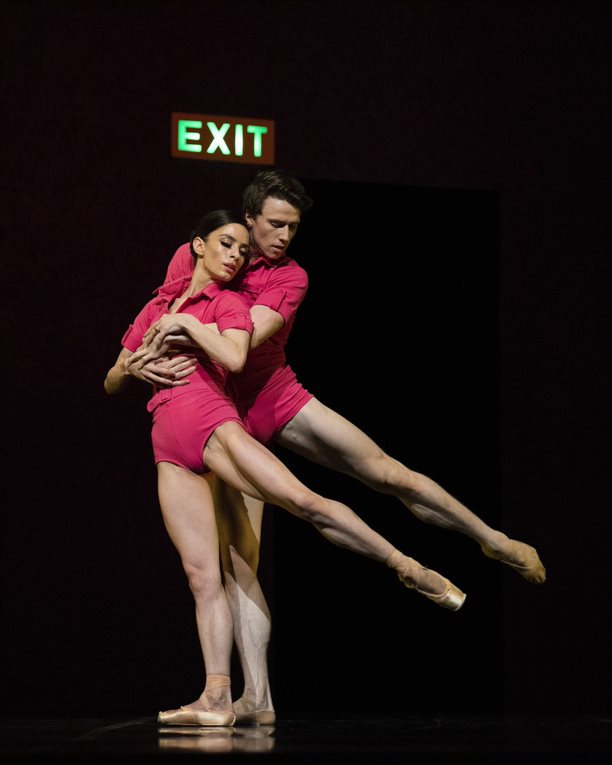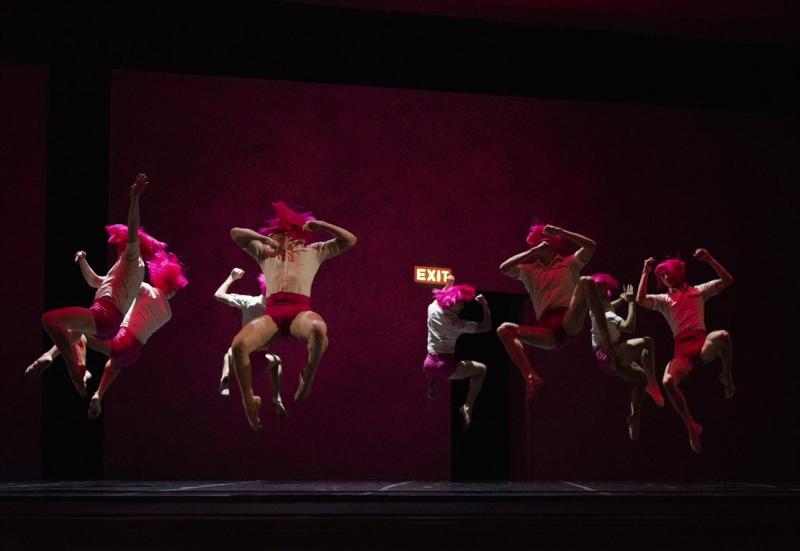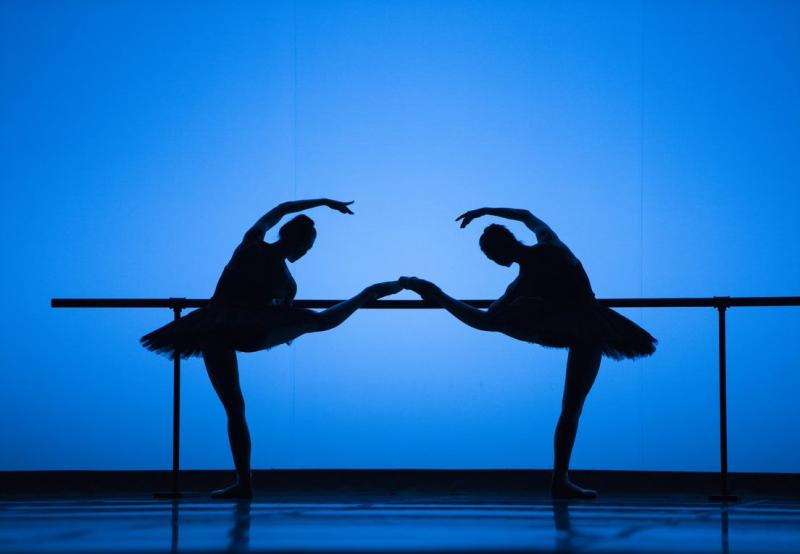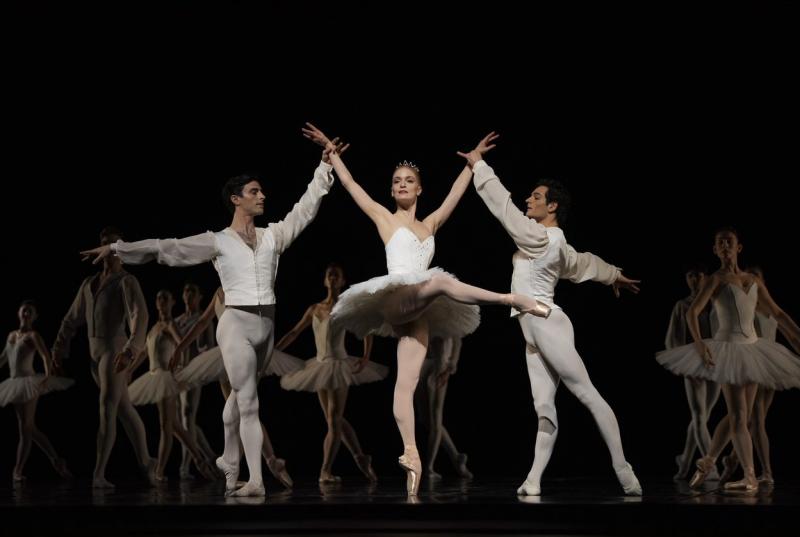Review: DANCE INNOVATIONS at San Francisco Ballet Delivers Thrills and Heartbreak

San Francisco Ballet's latest mixed repertoire program, "Dance Innovations," covers a lot of territory thematically and choreographically, and has a wealth of transcendent moments. Two of the ballets were made expressly for SFB, and the other is a classic from the mid-20th century. Two are glorious triumphs and one, alas, emphatically is not. But more on that later.
The program opens with Edwaard Liang's paradoxically heartbreaking and exhilarating "The Infinite Ocean" which he made on the company for its 2018 Unbound Festival. This is Liang's third piece made on SFB and easily his best. It's a rare instance of a choreographer taking a risk with a very weighty topic - the title refers to the gulf between life and death - and delivering big-time by making a dance that is at once gorgeous to look at, wonderfully entertaining, deeply moving, and utterly surprising. It is a joy to watch and leaves you with a lot to ponder after it's over.
As the curtain rises, a dozen dancers are arrayed in silhouette on a raked stage that ramps up toward a burnt-orange backdrop with a luminous gold orb that can be read as a beautifully abstracted seascape at dusk or dawn. The movement ranges from calm and serene to oppositional and tension-filled to searchingly intimate as though the dancers are individually and collectively working something out. There are two lovely, complicated pas de deux (sensitively danced by Dores André & Luke Ingham and Wona Park & Steven Morse) ending in striking poses that seem to come out of nowhere and suggest imminent transformation. The ballet is set to an original score by Oliver Davis that features graceful, legato lines for solo violin against churning, restless undulations for the rest of the orchestra, rather a perfect sonic representation of the ballet's title. Just at the point when the ballet seems to have run its course as a meditation on impending loss and separation, the music surprisingly accelerates into a final section that is triumphantly danced by the entire ensemble, especially Wona Park who fearlessly and thrillingly nails the final moment. It is a rare thing indeed to experience a ballet that has you misty-eyed for much of it, then leaves you utterly elated, not to mention questioning your own beliefs on the line between life and death. Now THAT'S thinking big!

in Trey McIntyre's "The Big Hunger"
The middle piece on the program, Trey McIntyre's world premiere "The Big Hunger," is equally ambitious as the title refers to our common search for the meaning of life amidst our tendency to get distracted by the small stuff. McIntyre's most recent ballet for SFB, "Your Flesh Shall Be a Great Poem" in 2018, was altogether delightful and touching, so I had high hopes for his new work. It, therefore, truly pains me to report that this one is an epic fail. It begins promisingly enough, with a big, juicy piece of music (Prokofiev's tempestuous 'Piano Concerto No. 2'), and a stunning set by Thomas Mika that features a menacing beam cantilevered over the stage and a square column center stage that intentionally obscures parts of the choreography. An opening pas de deux is skillfully danced by a perfectly matched Dores André and Benjamin Freemantle. The choreography is a little generic, but so far, so good.

It's when the lead couple is replaced by an 8-member male ensemble, all donning fluorescent pink, Dutch Bob wigs and matching short shorts that things really start to go awry. According to the program notes, these are "exit men" - stand-ins for the green man graphic commonly found in exit signs (which also appear as part of the stage set). It's an interesting concept, but frankly I didn't get the connection to what I was seeing onstage. The exit men then alternate with two other duos, one opposite- and one same-sex, and eventually reappear in identical black Dutch Bob wigs with matching shorts. The music thrashes and crashes, the dancers fling and flail, and we are left to wonder what it all means. Even more disappointing, the movement is just a lot of high-energy push-pull that looks like it could have been done by any garden variety contemporary choreographer and becomes soporific before long. On the plus side, the dancers are to be commended for their total commitment to this mystifying piece, and pianist Yekwon Sunwoo dispatched the notoriously difficult music with aplomb. And at least McIntyre may be congratulated for not failing by half-measures.

Happily, the program quickly gets back on track with the concluding ballet, "Etudes," something of a high wire act by Harald Lander. This piece essentially offers a sumptuous course in the history of ballet for 43 dancers in about 50 minutes. It starts with the simplest of ballet positions, then moves on to pliés and jetés, floor work, 19th-century Romantic ballet and ends in a cavalcade of 20th century neoclassic pyrotechnics. The ballet is akin to a fireworks display, starting with a few tiny sparklers, then gradually adding some Roman candles, etc. before ending in a burst of magnificence that fills your field of vision. The whole thing is fiendishly exacting. The opening sequence spotlights just the legs of 3 ballerinas as they move through some elementary positions. Simple movements, yes, but with the spotlight glaring down on them, perfect unison is required. If just one dancer lifts a leg an inch too high, the whole thing looks amiss. Later sequences have the ballerinas skittering across the stage in silhouette. Once again, even the tiniest mistake is glaringly obvious. When they get it right, though, it is positively thrilling.

in Harald Lander's "Etudes"
Only a top-tier company like SFB can pull off this kind of derring-do, and the dancing here was a joy throughout. Not every moment was perfection (that would be impossible), but when things clicked, they really clicked. Special mention much be made of the 36 brave corps de ballet members who gave it their all while knowing the goal here was to never, ever stand out. Lead ballerina Sasha De Sola was especially ravishing in the Romantic section which made beautiful use of her preternaturally serpentine line, expressive arms and supple phrasing. She also astonished in a series of accelerating pirouettes that stopped on a dime with her stock-still on pointe. Angelo Greco and Joseph Walsh were a delight as her cavaliers, two perfectly matched bookends, each supplying bursts of bravura dancing. It is such a treat to see principal dancers capable of standing out one moment, then reining in their individualism to dance in perfect unison the next. All in all, a thrilling ballet that brings this program to a rousing close with all 43 dancers onstage in a festive explosion of classical dance. THIS is why we go to the ballet!
(All photos by Erik Tomasson)
San Francisco Ballet's "Dance Innovations" continues through Sunday, February 23rd, alternating with performances of its "Classical (Re)Vision" program, at the War Memorial Opera House, 301 Van Ness Avenue, San Francisco, CA. For tickets and additional information, visit www.sfballet.org or call (415) 865-2000 M-F 10am-4pm.
Reader Reviews
Videos

